Broadband internet access at sea is now a reality for many. In this article, Linda Shelley (a long-time contributor and fan of noforeignland), explains why the combination of the new noforeignland app and Starlink works so well for them.
Connecting cruising sailors when it is most needed
A few weeks ago we were sitting in an anchorage next to a resort in the South Pacific, when I received a message via noforeignland. Fellow cruisers were heading our way, and realizing they would be arriving in a new country in darkness, were looking for advice on a safe anchorage to stop at for the night.
No one likes to arrive in a busy and unfamiliar place late at night, particularly one that is not well lit or charted, strewn with mooring buoys and wrecks – and especially at the end of a rough, 4-day passage.
It was thanks to the combination of Starlink and noforeignland that they were able to find us and chat with a fellow sailor to get current, reliable, first-hand advice about their destination.
We talked them through the route around the reef, past the light on the point, and we switched on our blue courtesy lights to help guide them in to anchor beside us. Yes they probably would have been fine without our help, however it’s really comforting to have that extra, real time information and support in those situations.
Introducing the game-changers
The launch of the noforeignland app
This was the first game changer of the 2023 season. The launch of the NFL app put a vast collection of cruiser knowledge in the palm of our hand.
I have been an avid user of noforeignland since its early days as a website. Noforeignland has saved our bacon several times, from finding the only place to fill a butane gas bottle in the Dodecanese, to a much-welcome, protected anchorage in the Messina Straits when it was honking 25kts from the north. I love admiring the work of the many talented photographers in the monthly competition and hope that someone will find my uninspiring, yet practical photo of the unmarked immigration building in Noumea useful enough to vote for.
SpaceX’s Starlink
The second game-changer that has steamrolled the cruising community this season is Starlink. SpaceX’s hi-speed, low-latency satellite internet has spread faster than Covid in a crowded marina bar.
In the space of 12 months the square, white “dishy” has become a familiar sight on cruising yachts of all shapes and sizes. I don’t really need to say much more, because when you know, you know. We now wonder how we ever lived without it!
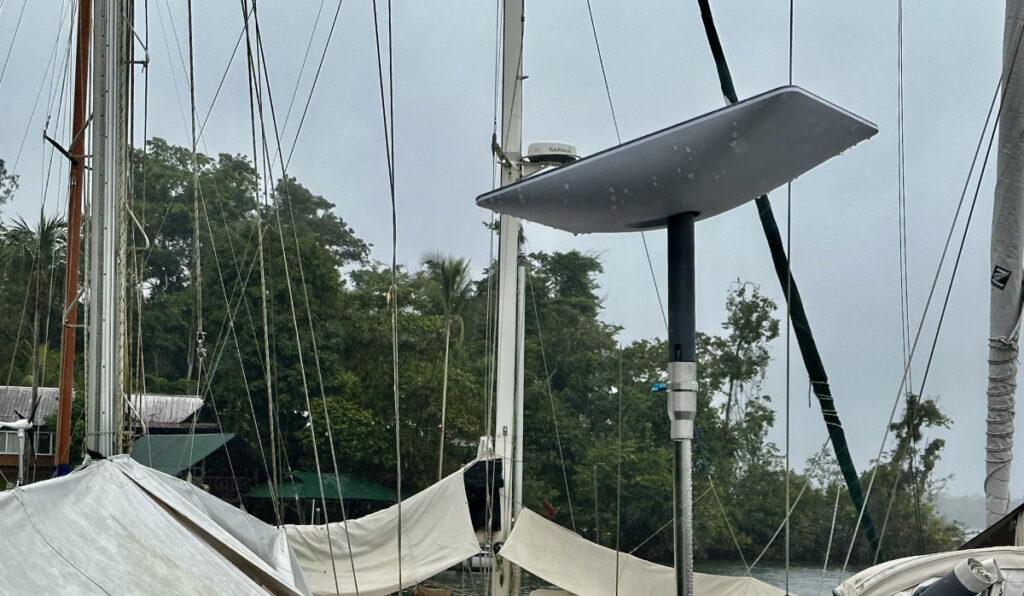
So when two game changers come together, how do you “adjust your sails” to take advantage of the favorable winds blowing your way and get the most out of this latest technology?
Seven ways the two new tech “stars” align
I had just got used to using the new NFL app when our Starlink arrived, so I had to think about how to switch it up and really make it work even better for us. Here are a few of our tips from recent experiences, cruising in the Pacific:
1. To SIM or not to SIM? That is the question.
Before Starlink, local SIMs were our main source of internet. Each time we were about to head to a new country, I would download the noforeignland offline maps for our destination and identify the nearest place to buy a SIM card. If we had to divert en route that would throw a spanner in the works!
With Starlink it is easy to get a little lazy with preparations prior to a crossing and only explore your surroundings after setting your anchor! Now we don’t really need to bother with a local SIM card, unless we are going to be doing some extensive land travel, away from the boat and that precious dishy.
2. Offline maps in noforeignland
It is so cool to have location-based info in noforeignland with offline maps at your fingertips wherever you are! It is a great, life-saving feature which I loved having pre-Starlink and it is definitely not redundant post Starlink. If you have opted not to buy a SIM, then you had better remember to download the offline maps of your destination before going ashore. Otherwise how are you going to find the best pain-au-chocolat in New Caledonia?
3. Real-time boat tracking
Noforeignland’s boat track recording feature works well whether you are on-line or offline. Just remember to switch it on, and your boat track will be automatically recorded and shared from one anchorage to the next (and into the bar should you forget to turn it off). With Starlink you are constantly connected so all you need to do is wake the app up from time to time and your current location will be automatically shared, whether you are close to shore or mid ocean.
For really real-time tracking, plug your phone into a power supply and turn your power saving settings off to prevent Android or iOS from putting the app to sleep.
4. Real-time boat stories
With the noforeignland app and Starlink it is possible to upload a story to your track while you are in motion. You can capture in real time that place where you spotted a whale, caught a massive tuna or helped rescue a drowning pig. This is great news for friends, family and fellow cruisers following your journey.
5. Up-to-date destination information
Pre-Starlink, local SIM cards often had poor or no cell coverage in remote anchorages – something you might not realize until you got there. Offline maps fix this but unless you had the forethought to download the next area you plan to sail to, you couldn’t research your next destination. With poor cellular signal, contributing to the map was impossible too. You could not review the lovely anchorage you were in, and mention its lack of cell coverage. Nobody would know where you were or how good a time you were having!
With Starlink we can now access and update information wherever we are; adding those spectacular drone shots in time for monthly photo competition, and paying it forward for any boats that might follow in our wake. Researching the next destination is now reliable too. As I mentioned at the start, if you see someone is already in an anchorage you’re thinking of heading to, you can easily message them ahead and see how the conditions are and whether there is likely to be enough space when you get there.
6. The satellite map layer
The noforeignland app offers a satellite map as well as day and night maps. However, only the day maps are available in offline mode. Being online with Starlink gives you access to satellite images, which are a handy supplement to the charts on a GPS enabled device; and have helped us navigate through the remote atolls of the Tuamotus!
Of course satellite images should not be solely relied on for navigation but they do help in planning your course and showing where you should pay extra attention for bommies where charts may be inaccurate.
7. Keep in contact with friends
Noforeignland is also a great place to network and connect with like-minded folk on boats. We follow our friends’ boats and the app lets us know whenever they are on the move and how far they are from us. With Starlink we get this information in real-time, and no longer miss opportunities to meet up with friends again.
Conclusion
There is no doubt that Starlink has changed the way cruisers communicate, plan and get the most from visiting a new location. At the same time the noforeignland app continues to go from strength to strength as savvy cruisers get on board and share their knowledge. The combination of Starlink and noforeignland is definitely a big winner!
Please comment below and let us know your tips and tricks for using noforeignland with Starlink?
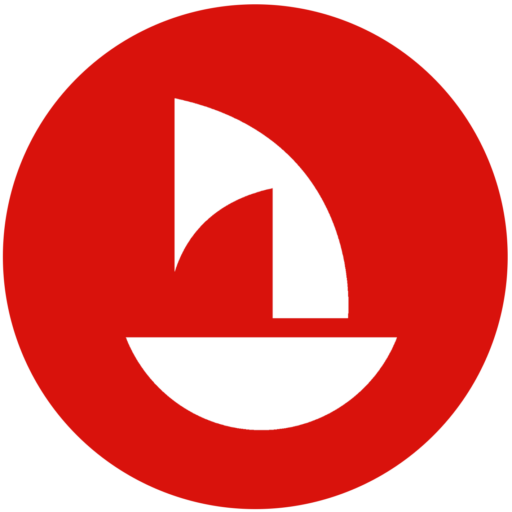
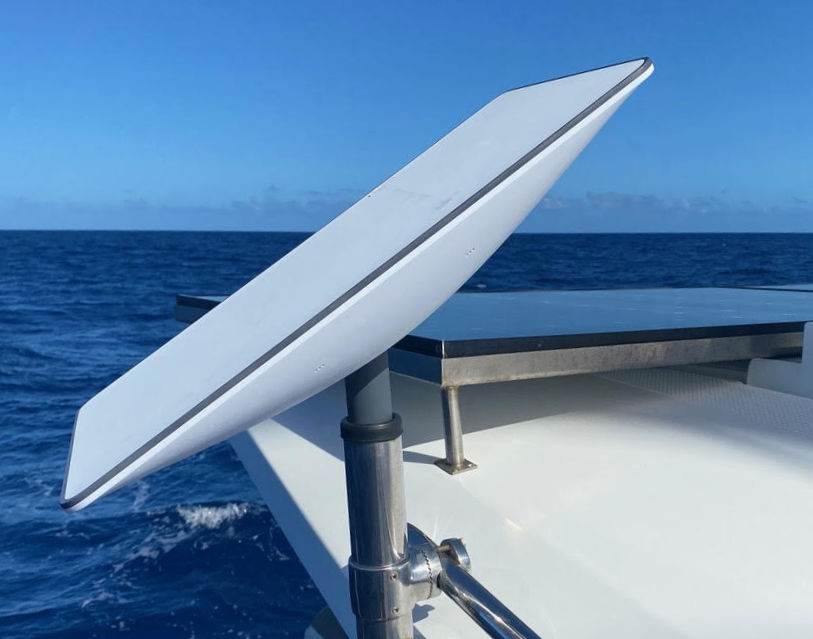




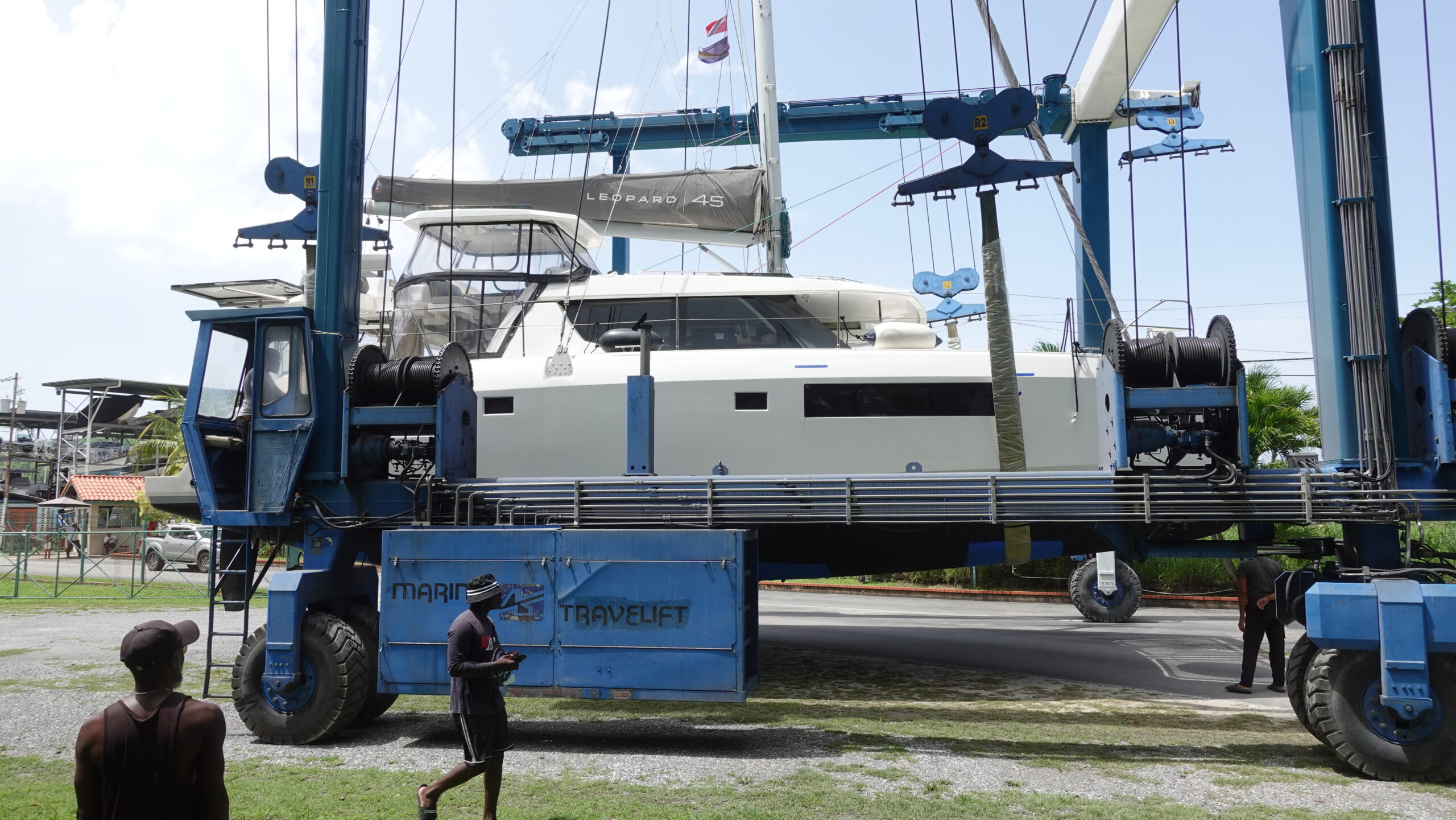
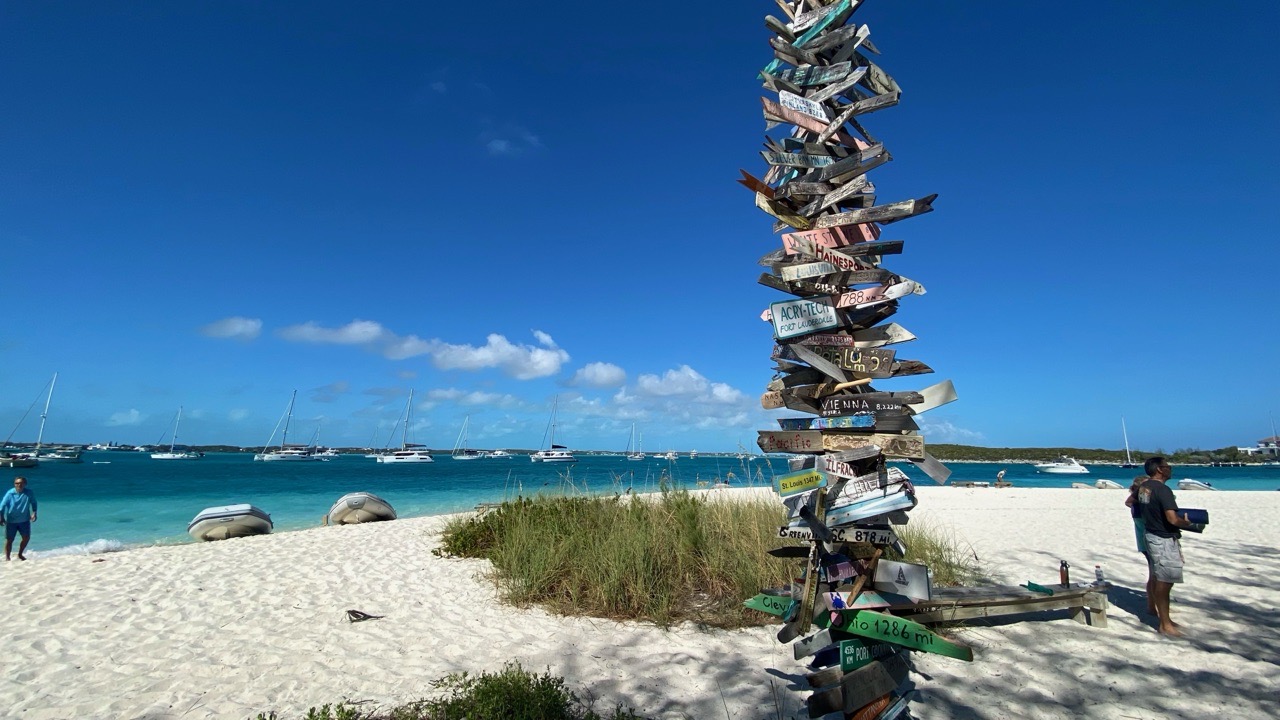

thank for very real practical article I have both game changers on vessel in Philippines that we will use on passage to Queensland in January 2024 Hope to see you down the track Enjoy NYE in Sydney